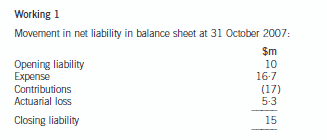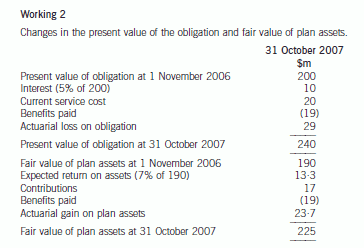本篇文章为大家分享了关于ACCA常用公式的信息,快来浏览!
发布时间:2020-02-02
2020年6月份考试马上就要开始,为了学员们更好的通过ACCA考试,51题库考试学习网为大家分享了关于ACCA常用公式的信息,希望对大家有所帮助。
一、境内
1、税额=销项税-进项税
2、销项税=销售额×税率
3、视销征税无销额(1)当月类平均;(2)近类货平均,(3)组税价=成本×(1+成利率)
4、征增税及消税:
组税价=成本×(1+成润率)+消税
组税价=成本×(1+成润率)/(1-消率)
5、含税额换
不含税销额=含税销额/1+率(一般)
不含税销额=含税销额/1+征率(小规模)
6、购农销农品,或向小纳人购农品:
准扣的进税=买价×扣率(13%)
7、一般纳人外购货物付的运费
准扣的进税=运费×扣除率
*随运付的装卸、保费不扣
8、小纳人纳额=销项额×征率(6%或4%)
*不扣进额
9、小纳人不含税销额=含额/(1+征率)
10、自来水公司销水(6%)
不含税销额=发票额×(1+征率)
二、进口货
1、组税价=关税完价+关税+消税
2、纳额=组税价×税率
三、出口货物退(免)税
1、"免、抵、退"计算方法(指生产企自营委外贸代出口自产)
(1)纳额=内销销税-(进税-免抵退税不免、抵税)
(2)免抵退税=FOB×外汇RMB牌价×退率-免抵退税抵减额
*FOB:出口货物离岸价。
*免抵退税抵减额=免税购原料价×退税率
免税购原料=国内购免原料+进料加工免税进料
进料加工免税进口料件组税价=到岸价+关、消税
(3)应退税和免抵税
A、如期末留抵税≤免抵退税,则:
应退税=期末留抵税
免抵税=免抵退税-应退税
B、期末留抵税>免抵退税,则:
应退税=免抵退税
免抵税=0
*期末留抵税额据《增值税纳税申报表》中"期末留抵税额"定。
(4)免抵退税不得免和抵税
免抵退税不免和抵税=FOB×外汇RMB牌价×(出口征率-出口退率)-免抵退税不免抵税抵减额
免抵退税不免和抵扣税抵减额=免税进原料价×(出口征率-出口货物退率)
2、先征后退
(1)外贸及外贸制度工贸企购货出口,出口增税免;出口后按收购成本与退税率算退税还外贸,征、退税差计企业成本
应退税额=外贸购不含增税购进金额×退税率
(2)外贸企购小纳人出货口增税退税规定:
A、从小纳人购并持普通发票准退税的抽纱、工艺品等12类出口货物,销售出口货入免,退还出口货进税
退税=[发票列(含税)销额]/(1+征率)×6%或5%
B、从小纳人购代开的增税发票的出口货:
退税=增税发票金额×6%或5%
C、外企托生企加工出口货的退税规定:
原辅料退税=国内原辅料增税发票进项×原辅料退税率
希望本篇文章能够帮助到大家,如果大家还遇到其他不能解决的问题,可以反馈给51题库考试学习网,我们会尽快帮您解决。
下面小编为大家准备了 ACCA考试 的相关考题,供大家学习参考。
(c) Issue of bond
The club proposes to issue a 7% bond with a face value of $50 million on 1 January 2007 at a discount of 5%
that will be secured on income from future ticket sales and corporate hospitality receipts, which are approximately
$20 million per annum. Under the agreement the club cannot use the first $6 million received from corporate
hospitality sales and reserved tickets (season tickets) as this will be used to repay the bond. The money from the
bond will be used to pay for ground improvements and to pay the wages of players.
The bond will be repayable, both capital and interest, over 15 years with the first payment of $6 million due on
31 December 2007. It has an effective interest rate of 7·7%. There will be no active market for the bond and
the company does not wish to use valuation models to value the bond. (6 marks)
Required:
Discuss how the above proposals would be dealt with in the financial statements of Seejoy for the year ending
31 December 2007, setting out their accounting treatment and appropriateness in helping the football club’s
cash flow problems.
(Candidates do not need knowledge of the football finance sector to answer this question.)
(c) Issue of bond
This form. of financing a football club’s operations is known as ‘securitisation’. Often in these cases a special purpose vehicle
is set up to administer the income stream or assets involved. In this case, a special purpose vehicle has not been set up. The
benefit of securitisation of the future corporate hospitality sales and season ticket receipts is that there will be a capital
injection into the club and it is likely that the effective interest rate is lower because of the security provided by the income
from the receipts. The main problem with the planned raising of capital is the way in which the money is to be used. The
use of the bond for ground improvements can be commended as long term cash should be used for long term investment but
using the bond for players’ wages will cause liquidity problems for the club.
This type of securitisation is often called a ‘future flow’ securitisation. There is no existing asset transferred to a special purpose
vehicle in this type of transaction and, therefore, there is no off balance sheet effect. The bond is shown as a long term liability
and is accounted for under IAS39 ‘Financial Instruments: Recognition and Measurement’. There are no issues of
derecognition of assets as there can be in other securitisation transactions. In some jurisdictions there are legal issues in
assigning future receivables as they constitute an unidentifiable debt which does not exist at present and because of this
uncertainty often the bond holders will require additional security such as a charge on the football stadium.
The bond will be a financial liability and it will be classified in one of two ways:
(i) Financial liabilities at fair value through profit or loss include financial liabilities that the entity either has incurred for
trading purposes and, where permitted, has designated to the category at inception. Derivative liabilities are always
treated as held for trading unless they are designated and effective as hedging instruments. An example of a liability held
for trading is an issued debt instrument that the entity intends to repurchase in the near term to make a gain from shortterm
movements in interest rates. It is unlikely that the bond will be classified in this category.
(ii) The second category is financial liabilities measured at amortised cost. It is the default category for financial liabilities
that do not meet the criteria for financial liabilities at fair value through profit or loss. In most entities, most financial
liabilities will fall into this category. Examples of financial liabilities that generally would be classified in this category are
account payables, note payables, issued debt instruments, and deposits from customers. Thus the bond is likely to be
classified under this heading. When a financial liability is recognised initially in the balance sheet, the liability is
measured at fair value. Fair value is the amount for which a liability can be settled between knowledgeable, willing
parties in an arm’s length transaction. Since fair value is a market transaction price, on initial recognition fair value will
usually equal the amount of consideration received for the financial liability. Subsequent to initial recognition financial
liabilities are measured using amortised cost or fair value. In this case the company does not wish to use valuation
models nor is there an active market for the bond and, therefore, amortised cost will be used to measure the bond.
The bond will be shown initially at $50 million × 95%, i.e. $47·5 million as this is the consideration received. Subsequentlyat 31 December 2007, the bond will be shown as follows:

(b) (i) Discusses the principles involved in accounting for claims made under the above warranty provision.
(6 marks)
(ii) Shows the accounting treatment for the above warranty provision under IAS37 ‘Provisions, Contingent
Liabilities and Contingent Assets’ for the year ended 31 October 2007. (3 marks)
Appropriateness of the format and presentation of the report and communication of advice. (2 marks)
(b) Provisions – IAS37
An entity must recognise a provision under IAS37 if, and only if:
(a) a present obligation (legal or constructive) has arisen as a result of a past event (the obligating event)
(b) it is probable (‘more likely than not’), that an outflow of resources embodying economic benefits will be required to settle
the obligation
(c) the amount can be estimated reliably
An obligating event is an event that creates a legal or constructive obligation and, therefore, results in an enterprise having
no realistic alternative but to settle the obligation. A constructive obligation arises if past practice creates a valid expectation
on the part of a third party. If it is more likely than not that no present obligation exists, the enterprise should disclose a
contingent liability, unless the possibility of an outflow of resources is remote.
The amount recognised as a provision should be the best estimate of the expenditure required to settle the present obligation
at the balance sheet date, that is, the amount that an enterprise would rationally pay to settle the obligation at the balance
sheet date or to transfer it to a third party. This means provisions for large populations of events such as warranties, are
measured at a probability weighted expected value. In reaching its best estimate, the entity should take into account the risks
and uncertainties that surround the underlying events.
Expected cash outflows should be discounted to their present values, where the effect of the time value of money is material
using a risk adjusted rate (it should not reflect risks for which future cash flows have been adjusted). If some or all of the
expenditure required to settle a provision is expected to be reimbursed by another party, the reimbursement should be
recognised as a separate asset when, and only when, it is virtually certain that reimbursement will be received if the entity
settles the obligation. The amount recognised should not exceed the amount of the provision. In measuring a provision future
events should be considered. The provision for the warranty claim will be determined by using the expected value method.
The past event which causes the obligation is the initial sale of the product with the warranty given at that time. It would be
appropriate for the company to make a provision for the Year 1 warranty of $280,000 and Year 2 warranty of $350,000,
which represents the best estimate of the obligation (see Appendix 2). Only if the insurance company have validated the
counter claim will Macaljoy be able to recognise the asset and income. Recovery has to be virtually certain. If it is virtually
certain, then Macaljoy may be able to recognise the asset. Generally contingent assets are never recognised, but disclosed
where an inflow of economic benefits is probable.
The company could discount the provision if it was considered that the time value of money was material. The majority of
provisions will reverse in the short term (within two years) and, therefore, the effects of discounting are likely to be immaterial.
In this case, using the risk adjusted rate (IAS37), the provision would be reduced to $269,000 in Year 1 and $323,000 in
Year 2. The company will have to determine whether this is material.
Appendix 1
The accounting for the defined benefit plan is as follows:



16 Which of the following events between the balance sheet date and the date the financial statements are
authorised for issue must be adjusted in the financial statements?
1 Declaration of equity dividends.
2 Decline in market value of investments.
3 The announcement of changes in tax rates.
4 The announcement of a major restructuring.
A 1
A 1 only
B 2 and 4
C 3 only
D None of them
声明:本文内容由互联网用户自发贡献自行上传,本网站不拥有所有权,未作人工编辑处理,也不承担相关法律责任。如果您发现有涉嫌版权的内容,欢迎发送邮件至:contact@51tk.com 进行举报,并提供相关证据,工作人员会在5个工作日内联系你,一经查实,本站将立刻删除涉嫌侵权内容。
- 2020-02-22
- 2020-01-10
- 2021-06-03
- 2021-04-08
- 2020-01-08
- 2020-01-10
- 2020-08-13
- 2020-01-10
- 2020-09-03
- 2020-04-16
- 2020-07-04
- 2020-01-09
- 2020-01-09
- 2020-01-10
- 2020-09-03
- 2020-01-09
- 2020-01-03
- 2020-01-09
- 2020-04-30
- 2020-01-10
- 2020-12-31
- 2020-09-03
- 2021-03-28
- 2020-02-27
- 2020-01-08
- 2020-01-09
- 2020-01-09
- 2020-01-03
- 2021-01-13
- 2020-01-03